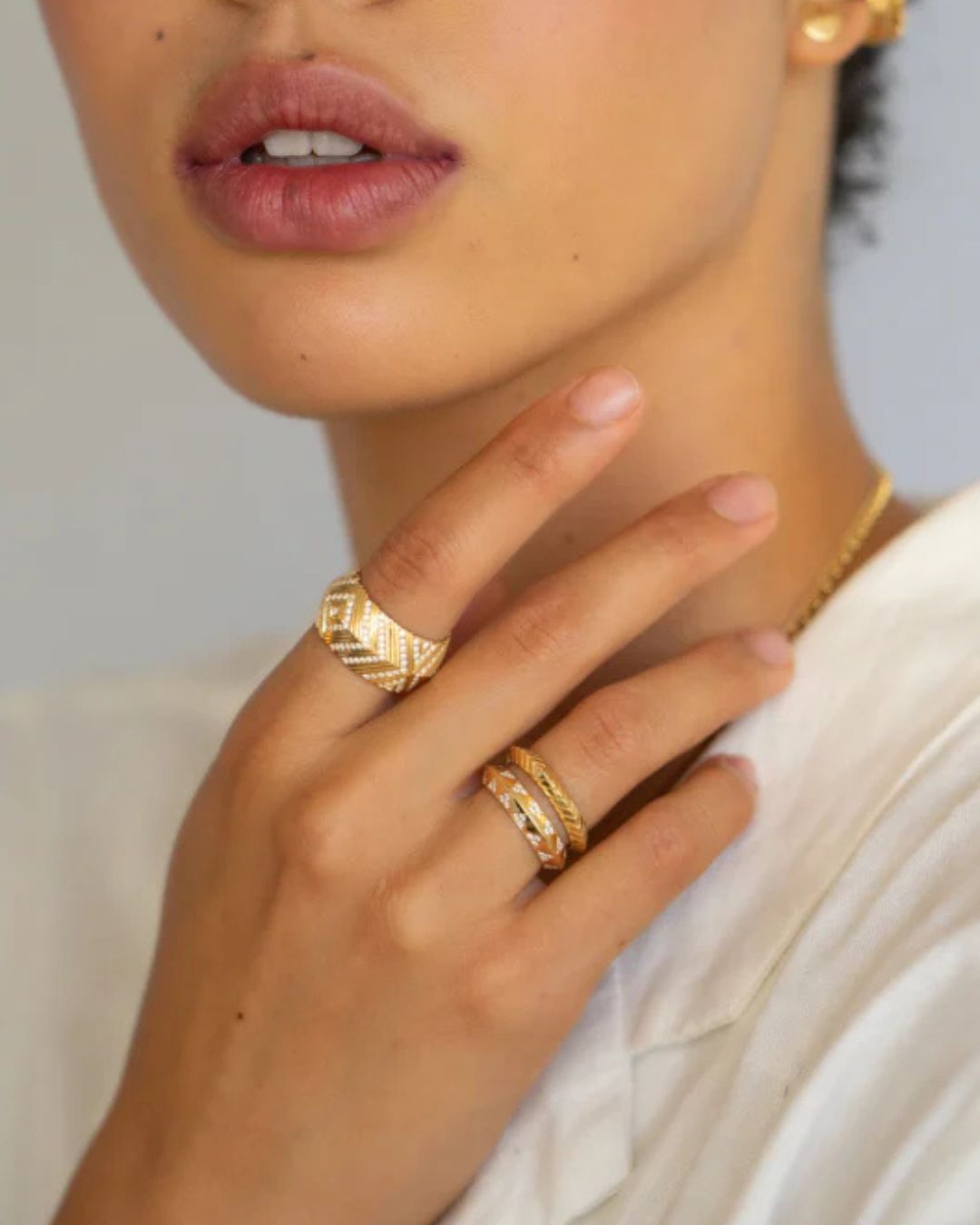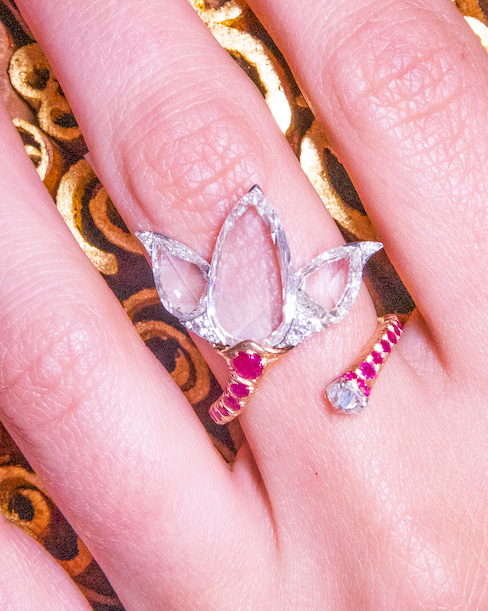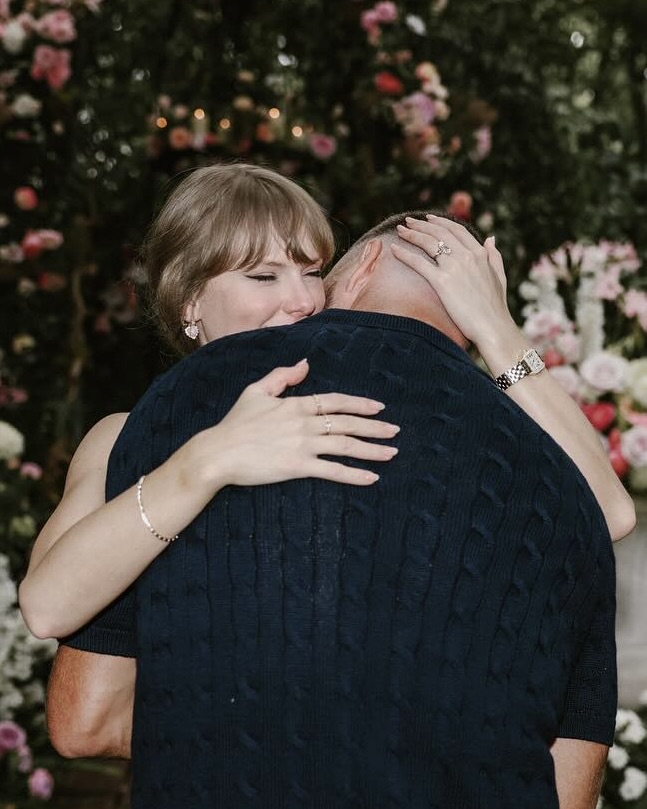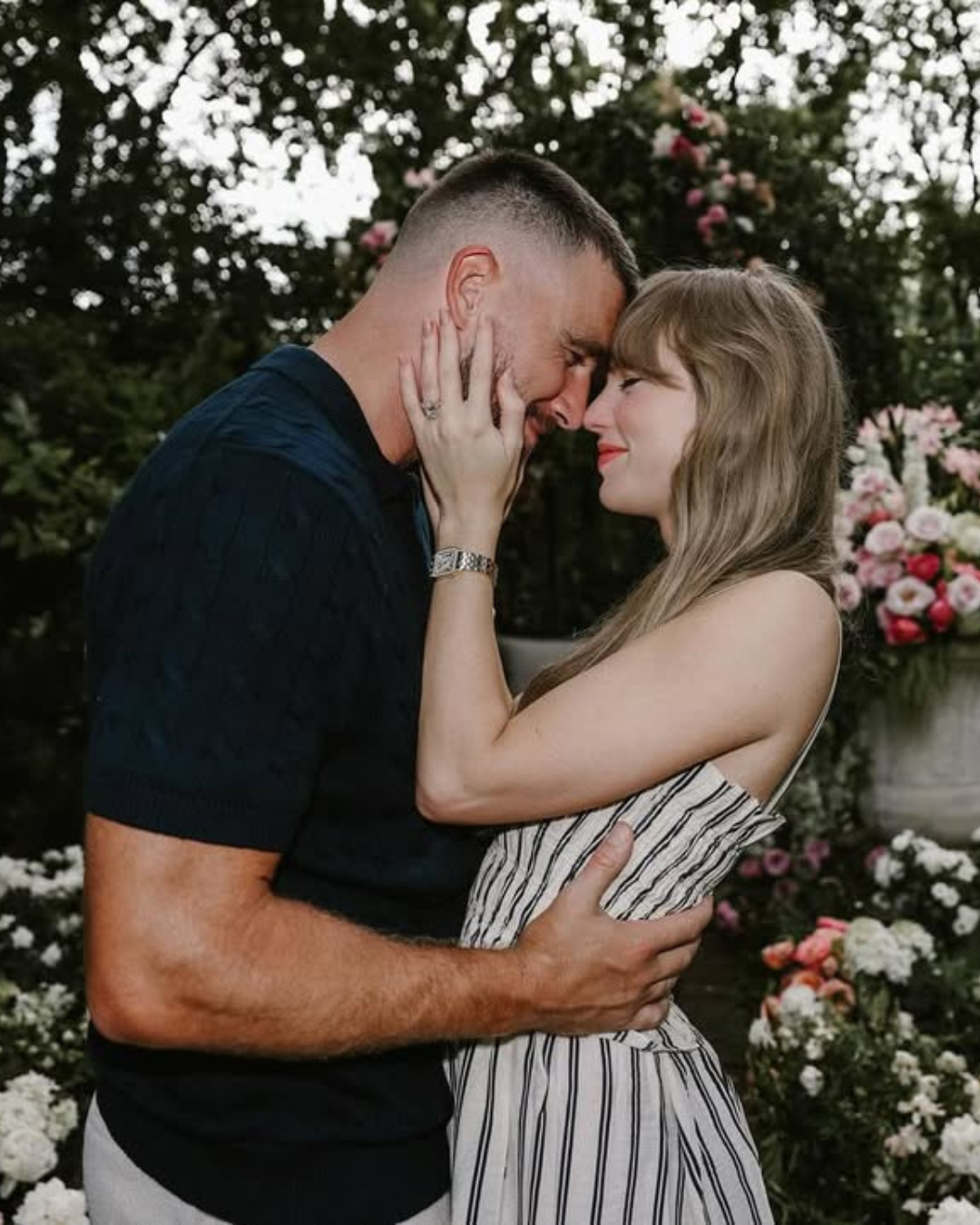< Historic Diamonds / Royal Stories
The Queen’s Platinum Jubilee: The Story Behind the Coronation Diamond Jewels
The magnificent jeweled regalia is straight out of a fairytale.

Elizabeth II wearing the Imperial State Crown and hold the Sovereign’s Sceptre and Orb after her coronation day in 1953. (Wikicommons)
On February 6, 2022, Queen Elizabeth will officially kick off her Platinum Jubilee. It will be celebrated throughout the year with official state events culminating in the first week of June. As the longest-serving monarch in Britain’s history, the Queen is a much-adored sovereign who served with dignity and grace.
Marking the 70th anniversary of her reign invites a wave of nostalgia, recalling the fairytale images of the beautiful 25-year-old Queen and her dashing husband, Prince Philip, at her coronation. The iconic image from that day—Queen Elizabeth adorned in the Imperial State Crown, holding the scepter set with a massive 500-carat diamond and a golden orb—underscored the tremendous responsibility and power she inherited.
Meet the Expert

- Jill Newman is a jewelry authority, editor, and storyteller with over 25 years of experience, having reported from diamond mines in Africa, cutting workshops in India and Belgium, and ateliers around the world.
- She serves as Editor-at-Large for the Natural Diamond Council, with additional bylines in The New York Times, Town & Country, Elle Décor, and Robb Report.
When the young Queen Elizabeth II acceded to the British throne in 1952, the coronation’s pageantry, ancient traditions, and jaw-dropping Crown Jewels captivated the world. The historic regalia played an integral part in the ceremony, each piece imbued with symbolism, history, and some of the world’s most important gems.
In looking forward to the Queen’s Platinum Jubilee, it remains fitting to take a closer look at her coronation jewels—and the deeper meanings they carry.
The Diamond Diadem: A Crown Fit for a Queen
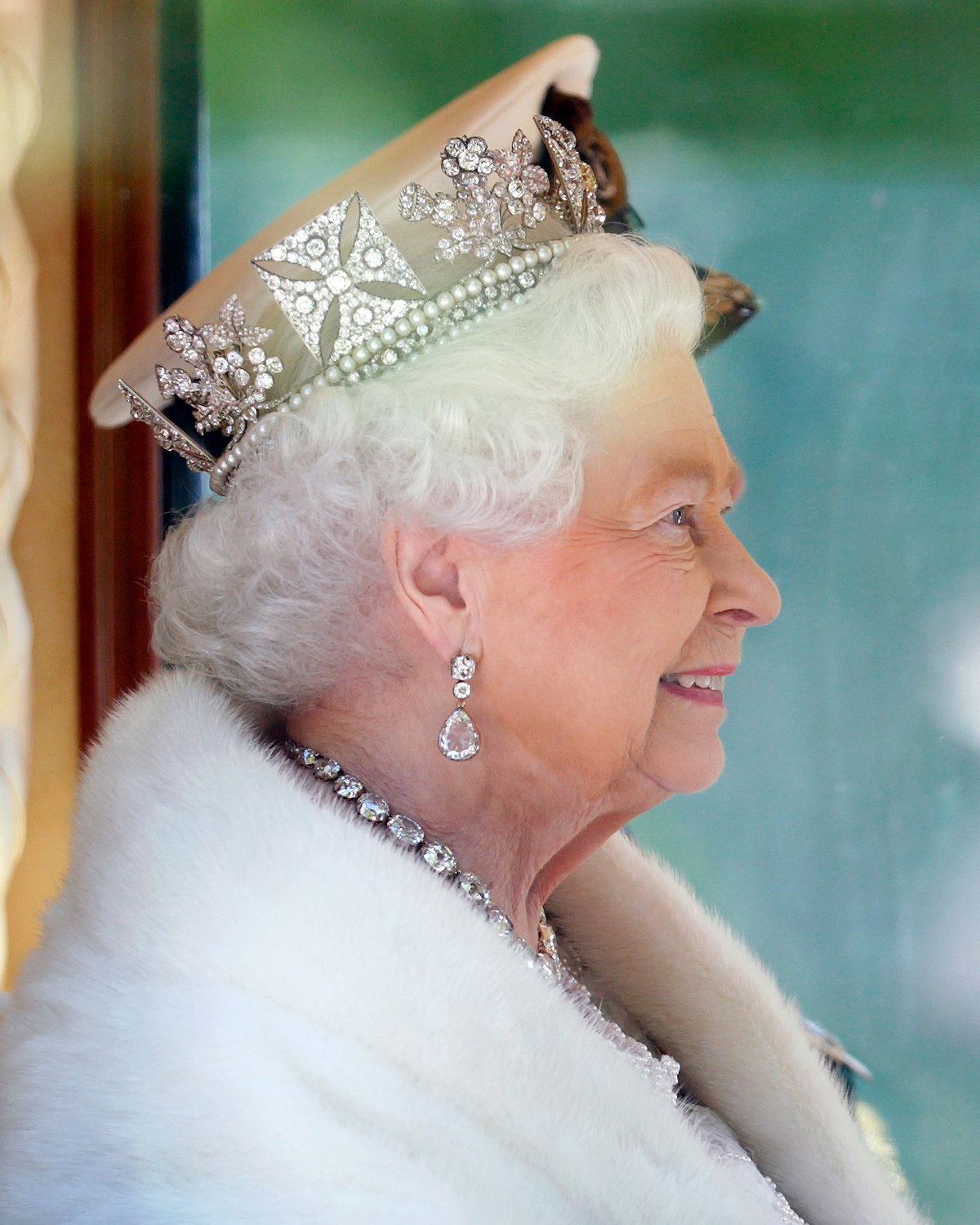
On June 2, 1953, Queen Elizabeth and Prince Philip arrived at Westminster Abbey, the setting for every coronation since 1066, in a fairytale-like gilded state coach. For the ride from Buckingham Palace to the Abbey, she wore the George IV State Crown. If it looks familiar, well it’s the same one she wears in her famous image that is emblazoned on British stamps.
Made for George IV’s coronation in 1821, the crown was created by British jeweler Rundell Bridge & Rundell with over 12,000 diamonds and nearly 200 pearls in shapes of English roses, Scottish thistles and Irish shamrocks.
Since King George VI, it has been worn exclusively by British queens and consorts, including Queen Victoria and the Queen Mum. Over the decades since, Queen Elizabeth has worn the crown at numerous official state engagements and affairs.
The George VI crown was one of three crowns worn on the Queen’s coronation day. The anointing of crown—and all the pomp and circumstance of coronation service—dates to King Edgar at Bath in 973. While many of the rituals have remained the same, the original Latin service was changed to English with the crowning of Queen Elizabeth I.
The Power and Symbolism of the Crown Jewels
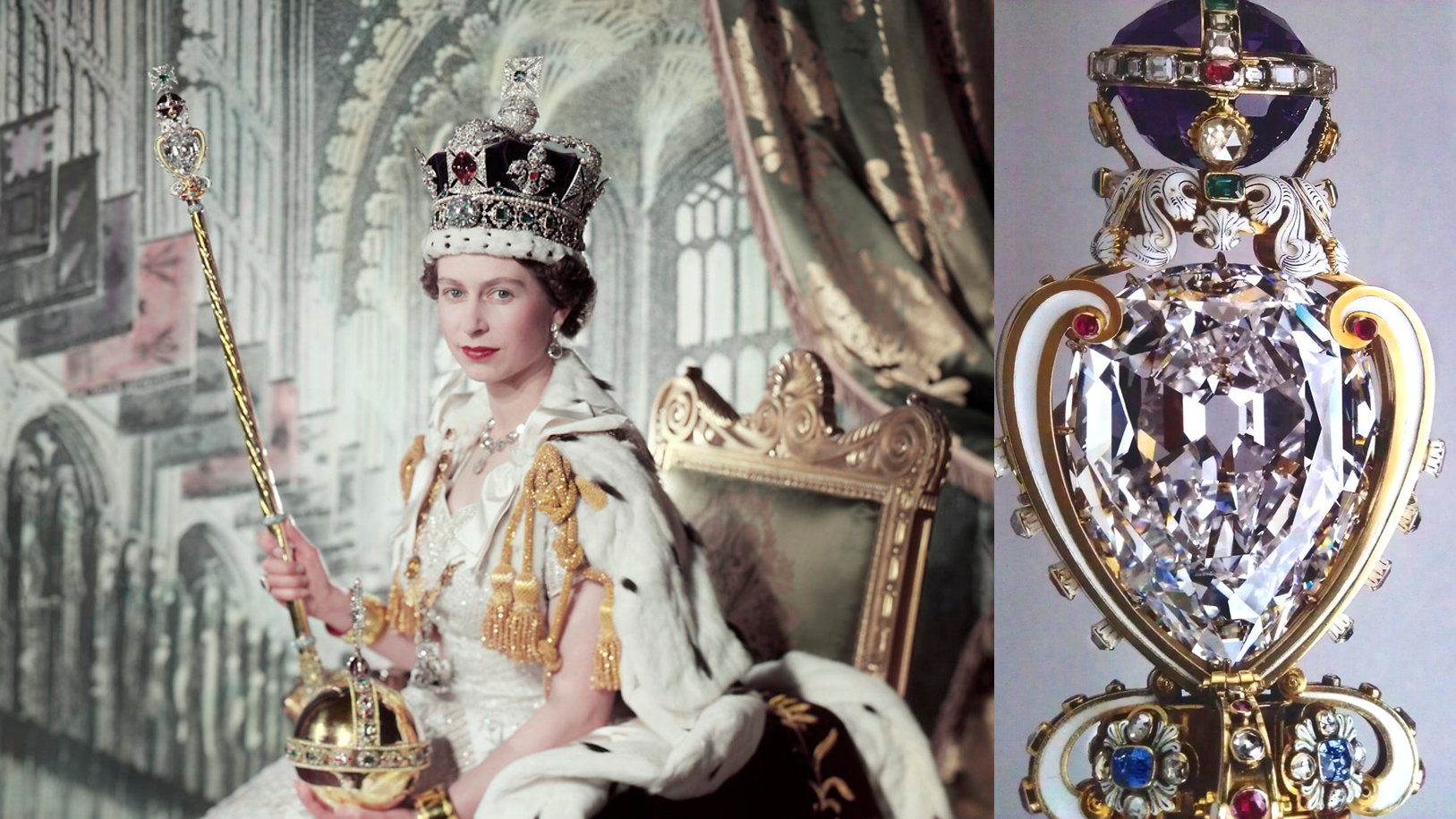
The empowering Coronation Regalia—the crown, scepter, rod and orb–have been used since 1661 to crown England’s sovereigns. These are safely stored at the Tower of London for over 600 years and are among Great Britain’s greatest tourist attractions.
During the ceremony, as tradition dictates, Queen Elizabeth was crowned with St. Edward’s Crown, the most sacred of the crowns. Made in the 11th century for Saint Edward the Confessor, the original crown was melted down and the gold used to create Charles II’s coronation crown in 1661. The magnificent nearly five-pound gold and jeweled headpiece weighed heavily on the petite Queen who wore it during the three-hour service.
A symbol of authority and sovereignty, the awe-inspiring scepter holds the world’s largest faceted white diamond. That alone is a statement of power and wealth! The original 1661 scepter was redesigned after King Edward VII’s acquisition of the Cullinan diamond, a 1.33-pound diamond discovered in South Africa in 1905. As the largest diamond ever discovered, King Edward had it cut into several stones and placed largest—a massive 530 carat diamond—in the redesigned scepter.
The golden Sovereign’s Orb, also made in 1661, delineates the Queen’s religious power. As “god’s representative on Earth,” the Queen is given the gold orb as a symbol of Christian world. It is set with a jeweled cross on top and surrounded by a band of diamonds, gemstones and pearls.
Queen Elizabeth’s Diamond Coronation Jewelry

On the big day, Queen Elizabeth kept her jewelry simple. She wore the Coronation Necklace, a diamond line necklace with large collet set diamonds that was made by the British jeweler Garrard for Queen Victoria in 1858.
The Monarch wore the matching Coronation Earrings, also made by Garrard for Victoria, featuring cushion cut diamond studs, with detachable large pear-shaped diamond pendants. The Coronation necklace and earrings are among the Queen’s favorite jewels, and she often wears them to state affairs and formal occasions.
Following the coronation ceremony, the Queen arrived on Buckingham Palace’s balcony to wave to her subjects wearing her third crown of the day, the Imperial State Crown. Made in 1937, it has 2,868 diamonds, 17 sapphires, 11 emeralds, 269 pearls and 4 rubies. The centerpiece is the 317.4 carat Cullinan II, the sister stone to the Cullinan I.
While kings and queens come and go, it’s the crown’s rituals and symbolic jewels and regalia that survive—and remain tangible signs of history as we look forward to the Queen’s Platinum Jubilee.
